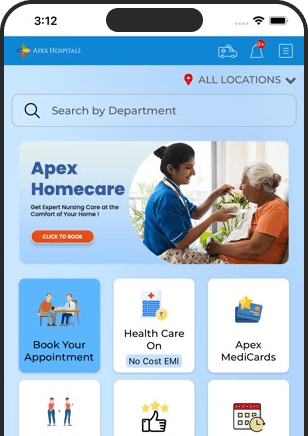
Haemorrhoids
What is Haemorrhoids?
Haemorrhoids, also known as haemorrhoids or "piles," are swollen lumps that develop inside and around the anus, a common occurrence among many individuals. They are often likened to "varicose veins" of the anus. Haemorrhoids result from a weakening of the anal canal's wall, leading to the thickening of the lining and subsequent enlargement of veins, which manifests as haemorrhoids. This condition can bring about symptoms such as bleeding, pain, and discomfort. Haemorrhoids can be classified as internal, occurring inside the anus, or external, appearing outside the anus. In cases where internal haemorrhoids enlarge significantly, they may protrude outside the anus, a condition known as prolapse.
What are the causes of haemorrhoids?
The veins surrounding the anus are susceptible to stretching and swelling under pressure, leading to the development of haemorrhoids. Increased pressure in the lower rectum can result from various factors, including:
1. Straining during bowel movements.
2. Prolonged periods of sitting, particularly on the toilet.
3. Chronic diarrhoea or constipation.
4. Obesity.
5. Pregnancy.
6. Engaging in anal intercourse.
7. Consuming a diet low in fibre.
8. Regularly lifting heavy objects.
What are the risk factors?
As individuals age, the likelihood of developing haemorrhoids rises. This is due to the gradual weakening and stretching of the tissues that support the veins in the rectum and anus. Additionally, pregnancy can contribute to this condition as the weight of the baby exerts pressure on the anal region.
What are the different types of Haemorrhoids?
Haemorrhoids can manifest internally or externally around your rectum, with the type determined by the location of the swollen vein. These types include:
- External: Swollen veins develop beneath the skin surrounding your anus, the canal through which stool is expelled. External haemorrhoids can be accompanied by itching and pain and may occasionally bleed. Sometimes, they may fill with blood and form clots, resulting in pain and swelling, though this is not typically dangerous.
- Internal: Swollen veins form inside the rectum, the segment of the digestive system that links the colon (large intestine) to the anus. While internal haemorrhoids may bleed, they often do not cause pain.
- Prolapsed: Both internal and external haemorrhoids can prolapse, wherein they extend and protrude outside the anus. These haemorrhoids may bleed or induce pain.
What are the symptoms of haemorrhoids?
Symptoms of haemorrhoids can vary based on their type.
- Pain-free bleeding during bowel movements, characterized by small amounts of bright red blood on toilet tissue or in the toilet.
- Prolapse or protrusion of a haemorrhoid through the anal opening, known as a prolapsed or protruding haemorrhoid, which may cause pain and irritation.
1. Internal haemorrhoids:
Located inside the rectum, internal haemorrhoids are typically not visible or palpable, and they often don't cause discomfort. However, straining during bowel movements or irritation can lead to:
- Itching or irritation in the anal area.
- Pain or discomfort.
- Swelling around the anus.
- Bleeding.
2. External haemorrhoids:
These occur under the skin surrounding the anus and may present with symptoms such as:
3. Thrombosed haemorrhoids:
When blood pools in an external haemorrhoid and forms a clot (thrombus), it results in a thrombosed haemorrhoid, which can lead to:
- Severe pain.
- Swelling.
- Inflammation.
- Formation of a complex, discoloured lump near the anus.
Complications of haemorrhoids
Complications associated with haemorrhoids are infrequent but may include:
Anaemia: In rare cases, persistent blood loss from haemorrhoids can lead to anaemia. Anaemia occurs when the body lacks enough healthy red blood cells to carry oxygen to its cells adequately.
Strangulated haemorrhoid: If the blood supply to an internal haemorrhoid becomes restricted, it is termed a strangulated haemorrhoid. Strangulated haemorrhoids can cause intense pain.
Blood clot: Occasionally, a clot may form within a haemorrhoid, resulting in a condition known as a thrombosed haemorrhoid. Although not typically dangerous, a thrombosed haemorrhoid can be extremely painful and may require drainage.
When to see the doctor
If you experience bleeding during bowel movements or if your haemorrhoids do not show signs of improvement after a week of self-care, it is essential to consult your healthcare provider.
Do not automatically attribute rectal bleeding to haemorrhoids, especially if you notice changes in bowel habits or alterations in stool colour or consistency. Rectal bleeding can be indicative of other conditions, such as colorectal cancer or anal cancer.
Seek immediate medical attention if you encounter significant rectal bleeding, along with symptoms like light-headedness, dizziness, or faintness.
FAQS
Health In A Snap, Just One App.
KNOW MORE
